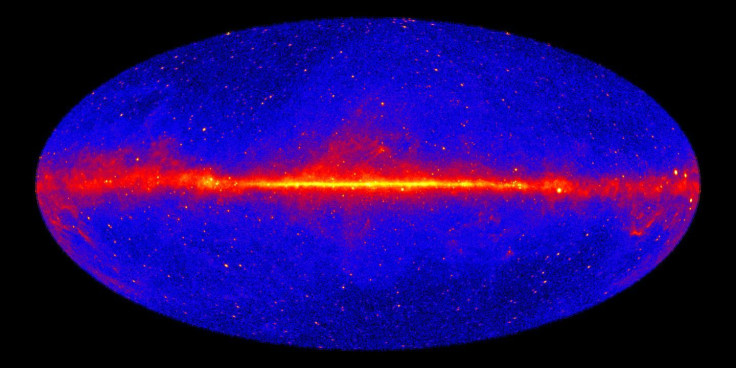Pulsars, Not Dark Matter, May Be Responsible For Excess Gamma-Ray Glow At Milky Way's Centre

The mysterious excess of high-energy gamma ray emissions coming from the Milky Way’s centre is most likely caused by pulsars and not dark matter as previously thought, according to a new study submitted for publication in the Astrophysical Journal.
The study, based on observations made using the Large Area Telescope (LAT) on NASA’s Fermi Gamma-ray Space Telescope, also identifies a population of pulsars in the region around the galactic centre. According to the researchers, this pulsar population could be what is responsible for the “speckled” signature of gamma rays coming from near the galactic centre.

“Our study shows that we don’t need dark matter to understand the gamma-ray emissions of our galaxy,” Mattia Di Mauro from the Kavli Institute for Particle Astrophysics and Cosmology (KIPAC) who led the analysis for the Fermi-LAT collaboration, said in a statement. “Instead, we have identified a population of pulsars in the region around the galactic center, which sheds new light on the formation history of the Milky Way.”
The hunt for dark matter — the mysterious substance that makes up 85 percent of the universe’s mass — is a lot like looking for a needle in a haystack. Except, in this case, scientists looking for it don’t even know what the needle looks like, and some are not even sure that it exists.
Some theories about the composition of dark matter suggest that it consists of Weakly Interacting Massive Particles (WIMPs) that release high-frequency gamma rays when they annihilate each other. If this is true, this should lead to a gamma-ray excess — one that can’t be explained as originating from any known phenomenon.
The Fermi telescope has not only found such an excess near the centre of the Milky Way but also near that of the Andromeda, or M31, galaxy — a spiral galaxy located about 2.5 million light-years from Earth. However, if the findings of the new study are to be believed, the gamma-ray excess is consistent with pulsars — which are rapidly rotating neutron stars.
As pulsars rotate, they emit high-energy radiation, much like a gigantic cosmic lighthouse, casting outs beams of light. If a beam of high-energy radiation is pointed toward the Earth, the pulsar emitting it can be detected using telescopes.

“Considering that about 70 percent of all point sources in the Milky Way are pulsars, they were the most likely candidates,” Di Mauro said. “But we used one of their physical properties to come to our conclusion. Pulsars have very distinct spectra – that is, their emissions vary in a specific way with the energy of the gamma rays they emit. Using the shape of these spectra, we were able to model the glow of the galactic center correctly with a population of about 1,000 pulsars and without introducing processes that involve dark matter particles.”
The researchers are now planning to conduct follow-up studies using radio telescopes to determine whether the identified sources are emitting their light as a series of brief light pulses — something that would conclusively prove that these emissions are coming from pulsars.
“Isolated pulsars have a typical lifetime of 10 million years, which is much shorter than the age of the oldest stars near the galactic center,” study co-author Eric Charles, also from KIPAC, said in the statement. “The fact that we can still see gamma rays from the identified pulsar population today suggests that the pulsars are in binary systems with companion stars, from which they leach energy. This extends the life of the pulsars tremendously.”
© Copyright IBTimes 2025. All rights reserved.




















